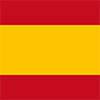Semipalatinsk, a top secret site that withstood 456 Soviet atomic tests
The Cold War was a latent conflict in which nuclear deterrence maintained a delicate balance between the great powers.
That nuclear deterrent was fueled by a constant development of new nuclear weapons for decades. To develop them, the different powers had to carry out nuclear tests in different places. Between 1945 and 2017, a total of 2,056 nuclear weapons tests were carried out in the world, of which 1,528 were underground explosions and 528 were atmospheric explosions, according to data from the Arms Control Association. The US was the country that carried out the most tests: 1,030. The USSR made 715, France 210, the United Kingdom 45, communist China 45, North Korea 6, India 3 and Pakistan 2.

The USSR did most of its nuclear testing at the Semipalatinsk Test Site in northeastern Kazakhstan. With an area of 18,000 square km (larger than the entire province of Zaragoza), this was the most secret place in the Soviet Union (access to the area was by plane from Moscow and with maximum reserve) and also became the site most bombed with nuclear weapons in the world: 456 nuclear tests were carried out there in total between 1949 and 1989.

Despite being a place unknown even to the vast majority of Soviets, Semipalatinsk was as important as the Los Alamos laboratory, where the first United States atomic bombs were developed. The Soviet test site was closed in 1991, coinciding with the disappearance of the USSR, and in the following years scientists from Kazakhstan, Russia and the United States carried out a cleanup of the remains of the plutonium that were left in the place, enclosing it in tunnels.

The population was never informed of the effects of these tests: the radiation could have affected up to 1.5 million Kazakhs. Today, much of the test site can be visited, although many areas are still fenced off due to the high levels of radiation caused by the nuclear tests that were carried out there. The area is still dotted with large craters left by underground explosions.

Today, in the vicinity of Semipalatinsk, there still exists a former Soviet secret city: Kurchatov, named after the Soviet scientist Igor Kurchatov (1903-1960), who headed the Soviet nuclear program. There is still a statue dedicated to him in the city. Kurchatov once had about 20,000 inhabitants, but after the closure of the Semipalatinsk Test Site, the Russians evacuated their last troops in 1994 and much of the population left.

Three months ago, Yes Theory published an excellent report visiting the city of Kurchatov and the Semipalatinsk Test Site. In this one, the protagonists of the video visited the site of an old underground nuclear laboratory, now in ruins and flooded with water, and a huge crater caused by a hydrogen bomb detonated on January 11, 1965 in Lake Chagan:
|
Don't miss the news and content that interest you. Receive the free daily newsletter in your email: Click here to subscribe |
- Lo más leído
- A British fairytale ruin: the abandoned shoe house on the Isle of Wight
- The interior of the Statue of Liberty torch and the sabotage that canceled its visits
- A virtual tour of ancient Rome in full color, just as it was in its heyday
- The supermassive black hole of Phoenix A, the biggest known light-devouring monster
- The unknown Soviet female cosmonaut who died on a mission: history or hoax?
- A large collection of Volkswagen cars hidden in an abandoned mine in Switzerland
- An old Soviet military plane abandoned from 1971 on a Russian island near Alaska

 ES
ES





Opina sobre esta entrada: